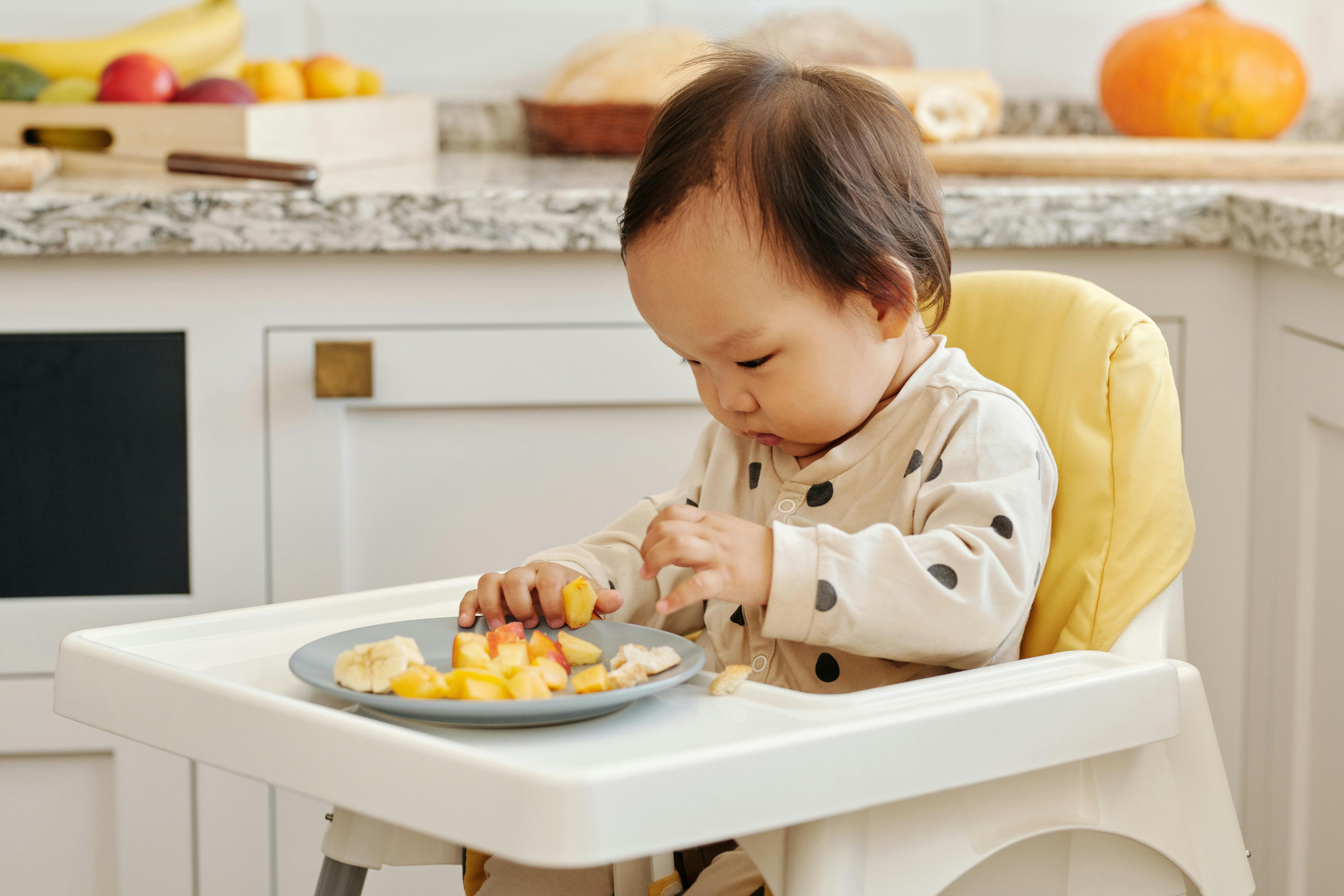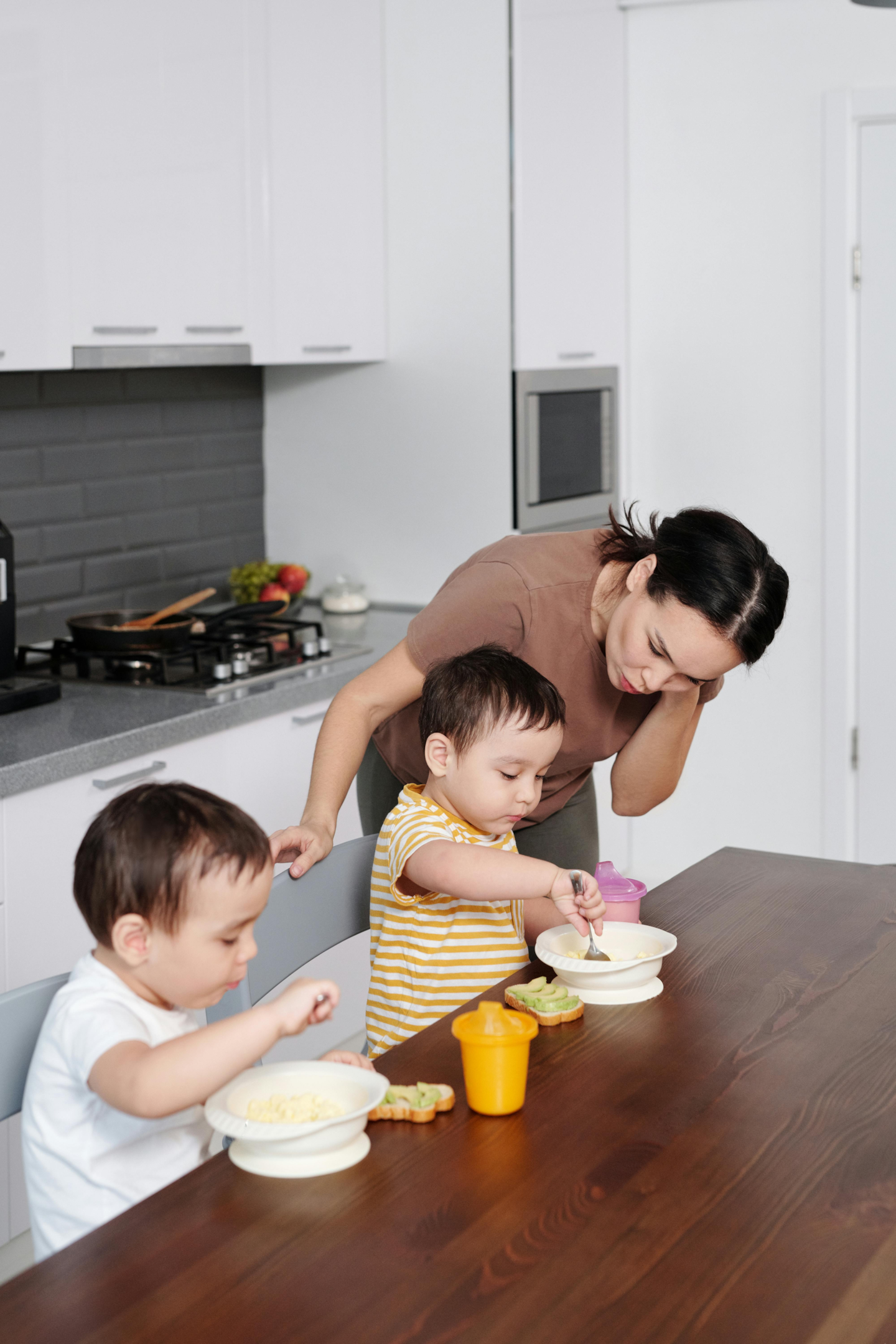Transitioning To Solids In Houston
Are you a new parent living in Houston and wondering when and how to start your baby on solid foods? You’re not alone! Transitioning from breast milk or formula to solids can be an exciting but overwhelming time for both you and your little one.
What is the Recommended Age to Introduce Solids?
The American Academy of Pediatrics recommends introducing solid foods to babies between 4 and 6 months old. However, every baby is different and some may be ready for solids earlier or later than others. Signs that your baby is ready for solids include being able to sit upright with support, showing interest in food, and the absence of the tongue-thrust reflex (pushing food out of the mouth with the tongue).
It’s important to consult with your pediatrician before starting solids, especially if your baby was born prematurely or has any health concerns. Your doctor can provide personalized recommendations and monitor your baby’s growth and development during this transition.
Also, keep in mind that introducing solids is not a replacement for breast milk or formula. These should still make up the majority of your baby’s diet during the first year.
Different Methods of Transitioning
When it comes to transitioning to solids, there are two main methods: traditional weaning and baby-led weaning. Here’s a brief overview of each:
Traditional Weaning
Traditional weaning involves introducing pureed or mashed foods to your baby with a spoon. This method allows you to have more control over what and how much your baby is eating, making it easier to track their intake and ensure they are getting enough nutrients.
To start traditional weaning, begin by offering small amounts of pureed fruits or vegetables at mealtime. As your baby gets used to eating solids, you can gradually increase the texture and variety of foods. It’s also important to introduce one new food at a time, waiting a few days in between each new food to watch for any potential allergies or sensitivities.
Baby-Led Weaning
Baby-led weaning involves offering whole pieces of soft foods that your baby can pick up and feed themselves. This method encourages independent eating and allows your baby to explore different textures and tastes at their own pace.
To start baby-led weaning, offer foods that are appropriate for your baby’s age and development, such as steamed vegetables, soft fruits, or toast strips. It’s important to always supervise mealtime to prevent choking hazards. Remember, your baby may not eat much at first, but this is normal and they will gradually increase their intake as they become more comfortable with solids.
A Combination of Both
Many parents choose to combine traditional weaning and baby-led weaning methods. This allows for a varied diet and can help introduce different textures and flavors to your baby. For example, you can offer pureed fruits and vegetables for spoon-feeding and also give your baby soft finger foods to explore and feed themselves.
It’s important to follow your baby’s cues and let them guide their own eating. Don’t force them to eat if they’re not interested or hungry, as this may lead to food aversions in the future. Remember, mealtime should be a positive and enjoyable experience for both you and your baby.
Considerations when introducing solid
As with any new stage of development, there are a few things to keep in mind when introducing solids to your baby. Here are some tips for a successful transition:
Start slow and gradually increase the amount and variety of foods.
Introduce one new food at a time and watch for any allergic reactions or digestive issues.
Avoid giving your baby honey, cow’s milk, salt, or sugar in their first year.
Always supervise mealtime and make sure foods are age-appropriate to prevent choking hazards.
Offer a variety of textures and flavors to help expand your baby’s palate.
Don’t force your baby to eat if they’re not interested or hungry. Let them guide their own eating.
Make mealtime a positive and enjoyable experience by involving your baby in the process, such as letting them help pick out fruits or vegetables at the store or allowing them to play with food while they eat.our goal should be to make it feel right for right now. Later will take care of itself. It always does.
Is Your Baby Ready for Solid Foods?
It’s important to remember that every baby develops at their own pace, so there isn’t a specific age when all babies are ready for solids. However, there are some signs to look out for that may indicate your baby is ready to start eating solids:
Head Control: Your baby should be able to hold their head up and sit upright with support.
Interest in Food: If your baby starts to show interest in what you’re eating, such as reaching for your food or watching you eat, it may be a sign that they are ready to try solids.
Loss of Tongue Thrust Reflex: This reflex causes babies to push food out of their mouth with their tongue. Around 4-6 months, this reflex starts to disappear, making it easier for your baby to swallow solids.
Ability to Close Their Mouth Around a Spoon: Your baby should be able to close their mouth around a spoon and move food from the front of their tongue to the back for swallowing.
Increased Hunger: If your baby seems hungrier than usual and is still not satisfied after breastfeeding or bottle-feeding, it may be a sign that they are ready for solid foods.
It’s important to keep in mind that introducing solids too early can increase the risk of choking and digestive issues.
Introducing solids to your baby can be a fun and exciting experience. Here are some tips to help make the transition smoother:
Start with single-ingredient foods, such as pureed fruits or vegetables, before moving on to mixed flavors.
Use small and shallow spoons that are specifically designed for babies. This can make it easier for them to eat and prevent any potential injuries.
Offer foods at room temperature or slightly warmed. This can make it more appealing to your baby and easier for them to swallow.
Let your baby explore different textures by offering soft finger foods, such as mashed avocado or steamed sweet potatoes.
Mix breast milk or formula into purees to add familiar flavors and nutrients.
Get creative and have fun with food! Try different recipes and combinations to keep your baby interested in trying new foods.
Remember, every baby is different and may have their own preferences when it comes to food. As long as you follow your baby’s cues and introduce solids in a safe and gradual manner, mealtime can be an enjoyable experience for both you and your little one.
Contact Little Eaters & Talkers for a Professional Consultation
If you have concerns about your child’s feeding or speech development, don’t hesitate to contact us for a professional consultation. Our team of experts is dedicated to providing compassionate and effective solutions for your little one.
We provide a range of services, including home visits Difficulty with Bottle-Feeding, Tongue Tie Complications, Oral Aversion, Introduction to Solids, Picky Eating Habits, and Challenges in Weight Gain. Through specialized techniques and personalized strategies, we strive to empower both parents and children for a positive and healthy feeding experience.
Jean and her team at Little Eaters & Talkers understand the importance of a child’s development and are committed to providing exceptional care for infants and children in Houston. With Jean’s extensive experience and specialized training, you can trust that your child is in good hands.
Call us at (832)304-3506 , book an appointment online, or email us at info@thelittleeaters.com to schedule a consultation and take the first step towards transforming your child’s feeding and speech journey into a playful and positive experience. We look forward to working with you!
FAQs
When is the right time to introduce solid foods to my baby in Houston?
The ideal time to start introducing solid foods to babies in Houston is around 6 months of age. However, it’s essential to also look for signs that your baby is ready, such as showing interest in family meals, being able to sit up with minimal support, and displaying good head control. Observing your baby’s hunger cues closely can also indicate readiness for starting solid food alongside baby foods.
What are some healthy foods to start with when transitioning my baby to solid foods?
When transitioning your baby to eating solid foods, it’s best to begin with single-ingredient, nutrient-rich healthy foods. Options include pureed vegetables like carrots and sweet potatoes, fruits such as apples and bananas, and whole grain cereals. Whole milk yogurt is also a great choice for introducing dairy. Remember to introduce new foods one at a time and watch for any adverse reactions to certain foods.
How can I make the transition to solid food easier for my baby in Houston?
To ease the transition to solid food for your baby in Houston, start by offering small amounts of solid foods once a day, gradually increasing as your baby becomes more accustomed to eating solids. Use a soft-tipped spoon to feed your baby and consider introducing a sippy cup with water during meal times. Encouraging your baby to join in family meals can also make solid foods more appealing by modeling eating behaviors.
Are there any foods I should avoid giving my baby when starting on solid foods?
Yes, when introducing solid foods, it’s important to avoid certain foods that could pose choking hazards or aren’t suitable for infants. Honey, whole nuts, grapes, hot dogs, popcorn, and foods with added sugar or salt should be avoided. Also, be cautious with allergenic foods like eggs, peanuts, and seafood; introduce them slowly and watch for any signs of an allergic reaction.
Conclusion
In conclusion, introducing solids to your baby can be an exciting and important milestone in their development. By incorporating organic and locally-sourced options into their diet, you can ensure that they are getting the freshest and most nutrient-dense foods possible.
It’s also important to pay attention to your child’s cues and introduce solids at a pace that is comfortable for them. And if you have any concerns or questions, don’t hesitate to reach out to professionals like those at Little Eaters & Talkers for personalized support and guidance.
With the right approach and a little creativity, mealtime can be a fun and enjoyable experience for both you and your baby. Happy eating!



